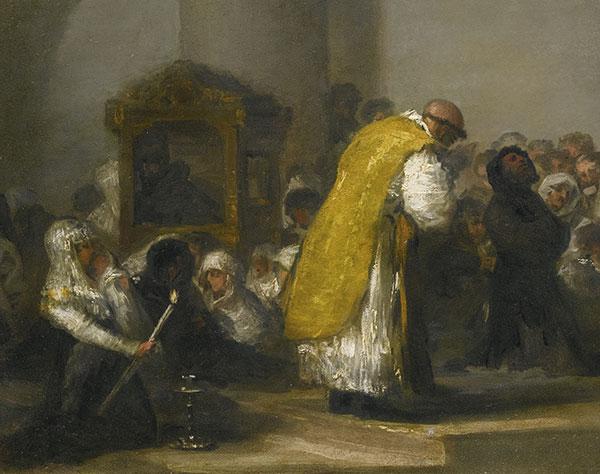Churching
Published in Features, Issue 1 (January/February 2020), Volume 28By Fiona Fitzsimons
The medieval church practised ‘churching’ as a rite of purification and thanksgiving for the safe delivery of a woman after the birth of her child. It marked the end of the ‘green month’ of the woman’s confinement and her resumption of normal domestic life and sexual relations with her husband. At the Reformation nonconformists rejected churching, but Catholic and Anglican churches continued the practice into the late nineteenth century. It was universal at all social levels—even Queen Victoria was churched.
The new mother was presented before the whole congregation, with ‘accustomed offerings’ to the officiating priest—in earlier times a length of cloth known as a ‘chrisom’, by the nineteenth century a cash stipend.
In Ireland, all fees paid by the people to the clergy were a political hot potato, and resentment at church fees could spill over into disputes. In 1833 the parishioners of Binghamstown (Kilmore), Co. Mayo, accused their parish priest of embezzlement, extortionate fees and the withholding of church rites and sacraments (specifically the churching of women and confession) to enforce social control. The priest, Revd J.P. Lyons, responded by taking a libel case against his parishioners in the Westport quarter sessions, subsequently transferred to the court of the exchequer in Dublin. The case was dismissed as the jury couldn’t agree on a verdict.
The controversy led to the publication of the many stipends paid by the Catholic laity in some parishes for sacraments and church rites. The figures published show differences between districts. One letter in the Limerick Chronicle noted that the ‘Churching of women [was] not charged for in the Diocese of Dublin, but in the country, 2s 6d’, while another wrote that in some parishes ‘… baptism and churching of women [was] classed and paid for together’.
In the Protestant community, the perception that the Catholic clergy used church sacraments to enforce conformity was a particular shibboleth. In the 1840s the public debate widened into a discussion of whether the State should pay Catholic clergy so that ‘the law will … confer on the Irish laity … the privilege of demanding Christian baptism, churching of women and burial, as inalienable legal rights’.

Above: La Misa de parida (Mass of the newborns) by Eugenio Lucas Villamil, 1900 (after Goya).
The Church of Ireland was also capable of calling out ‘sacerdotal tyranny’. In the late 1860s there was a public discussion on whether unmarried mothers should be churched. And in 1875 Lord James Butler cleared the floor of the general synod when he questioned the right of clergy to intervene in the delicate question of balancing the mother’s right to life against that of her unborn child—‘… a clergyman refused to allow prayers to be said in the church for a woman after her confinement because the child had been sacrificed to save the mother’.
Evidence of churchings is easier to find among Church of Ireland registers, often as an addendum in the baptismal register. St Werburgh’s, Dublin, has a combined register of baptisms and churchings from 1789 to 1802, not published on the irishgenealogy website. In Cork, Cloyne parish kept a record of churchings from 1795 to 1818, while Kilbrogan has churchings from 1756 to 1818. St Mary’s, Clonmel, has churchings from 1796 to 1801. This is not intended as an exhaustive list but only as the records we’ve worked with.
Evidence of churchings in Catholic registers is harder to come by and usually survives in baptismal registers as notes written in the margins or above the line, as in Kilbrogan RC church, Co. Galway.
Fiona Fitzsimons is a director of Eneclann, a Trinity campus company, and of findmypast Ireland.
















